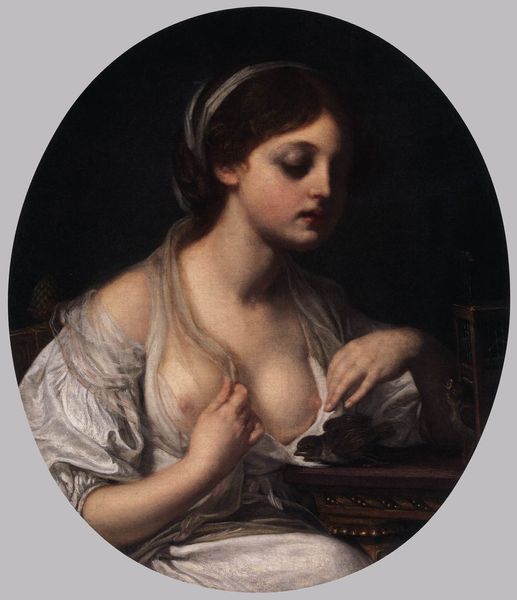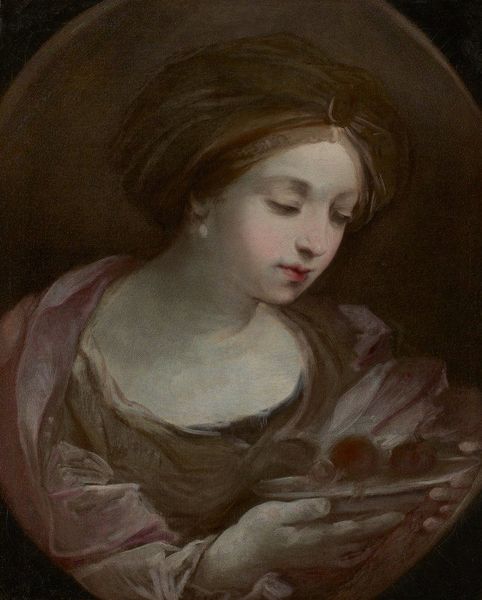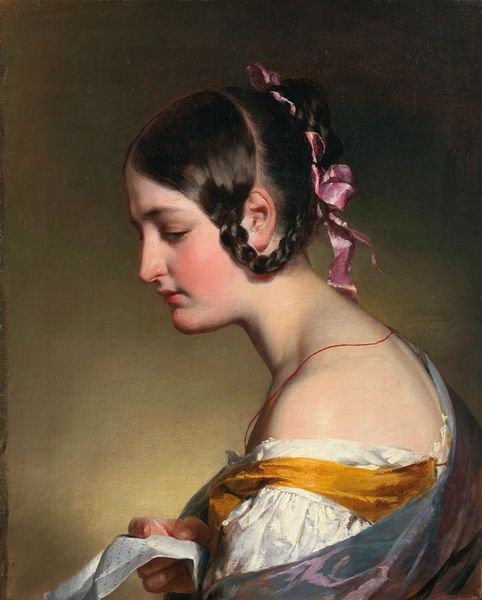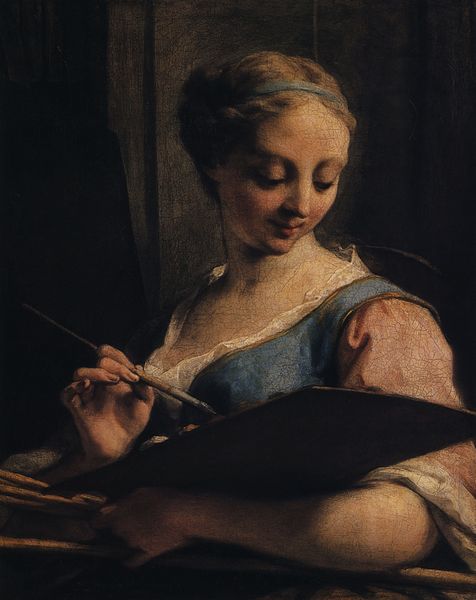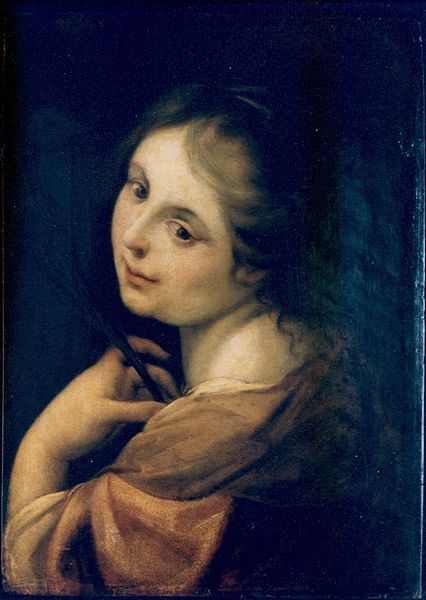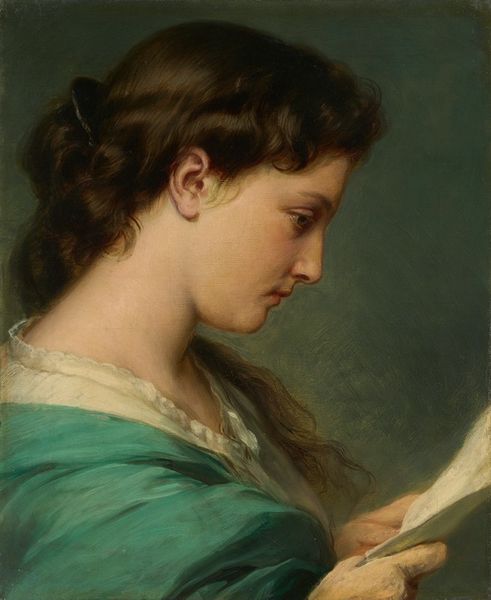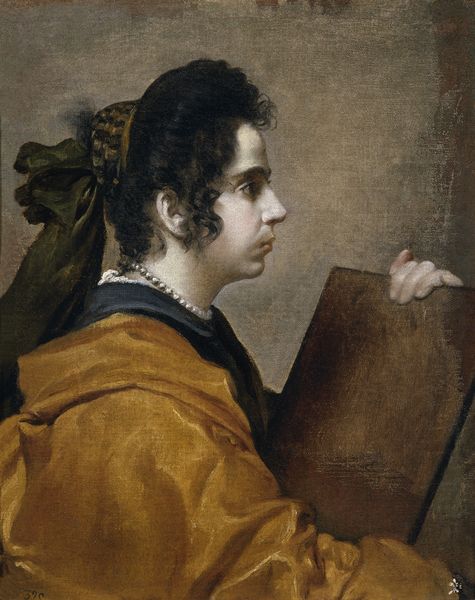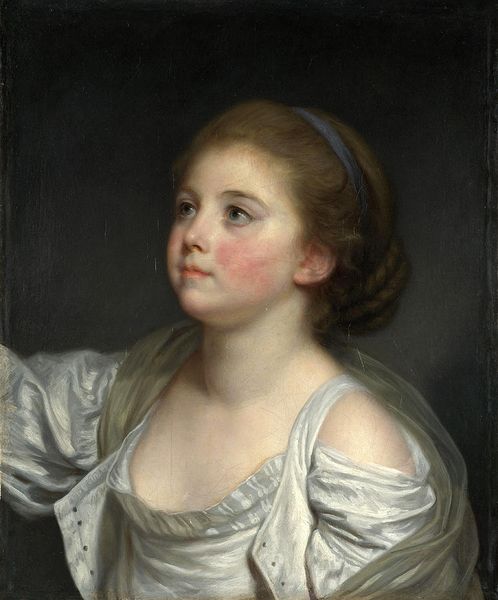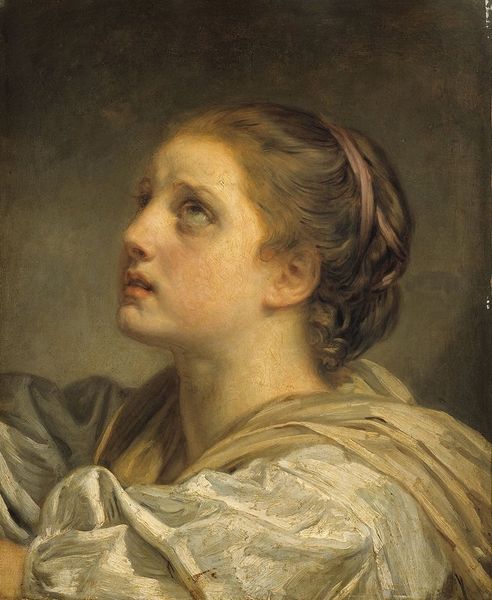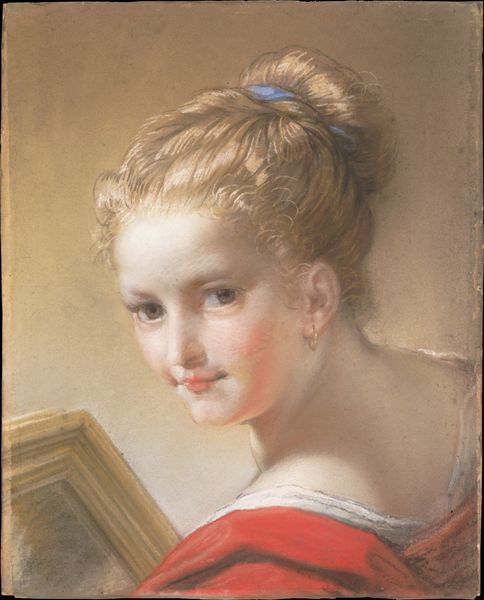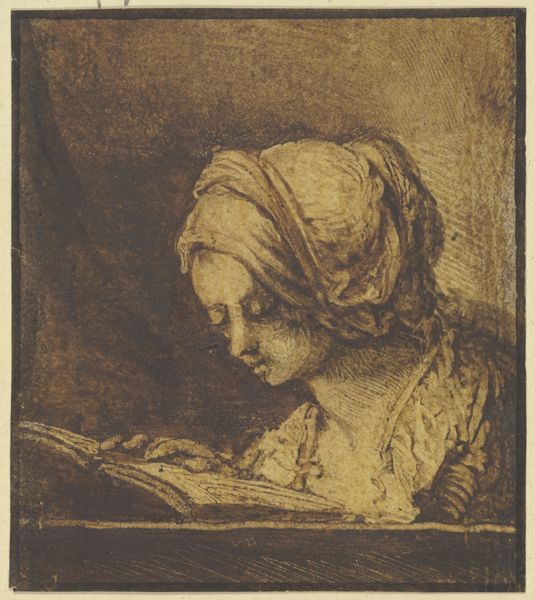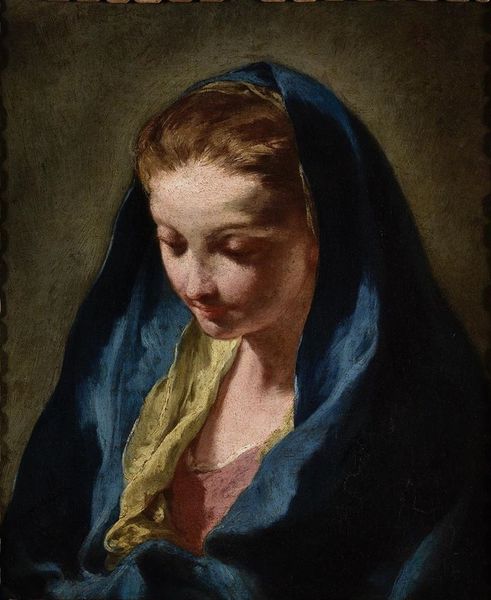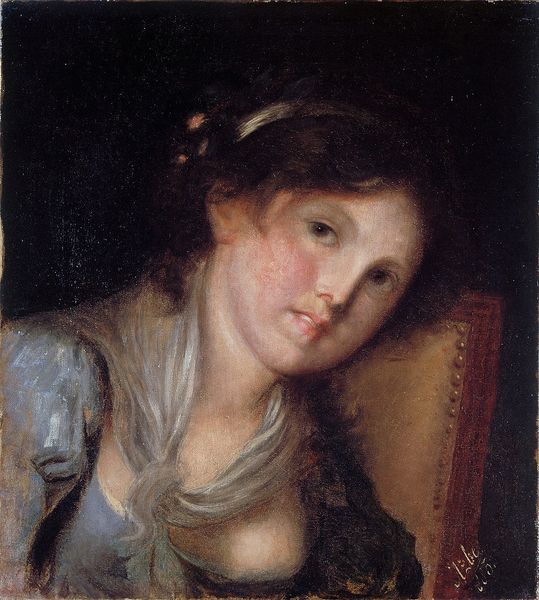
painting, oil-paint
#
portrait
#
woman
#
painting
#
oil-paint
#
christianity
#
lady
#
italian-renaissance
Dimensions: 48 x 39 cm
Copyright: Public domain
Curator: Looking at Parmigianino's "Saint Barbara," completed around 1522 and residing at the Museo del Prado, I am struck by her ethereal quality. Editor: Yes, she is so still and luminous. But also unsettling, like a figure caught between worlds. The textures, from her soft skin to the drapery, create a kind of luxurious melancholy. Curator: Let's consider Parmigianino’s process, here. The subtle use of oil paint allows for the incredible rendering of light and shadow. There is an emphasis on form and refined modeling, all contributing to a sense of tactile richness that transcends just portraiture. How was this visual impact achieved? Editor: I think the intentional idealization speaks to the Renaissance focus on beauty but it’s loaded, of course, considering Saint Barbara's identity. How do we reconcile the almost artificial serenity with the legend of a woman imprisoned and eventually martyred for her faith? She embodies the strength and rebellion, but, ironically, in the face of such constraints placed on women's lives during that time. Curator: The fact that she is presented as almost disembodied lends her a strange kind of authority. The painting itself, as an object, also becomes imbued with sacred potential through the artistic labor embedded in its materiality. We also need to remember what this image was made for, as it affects meaning, no? Editor: Absolutely. The choice to depict her as an individual—separate from narratives of the other saints—raises questions of gender and power dynamics. Why show Barbara alone? Was the audience intended to consider her agency in a world that repeatedly tried to silence her? Curator: Indeed. By emphasizing Saint Barbara's material existence, it might ask for a new understanding, through process, craft and objecthood, how our histories of production might enable and inhibit how we tell such difficult stories of gender and faith. Editor: Precisely. It highlights that Saint Barbara as symbol requires our constant and critical engagement if we really aim to grapple with faith, female representation, and societal narratives throughout the ages.
Comments
No comments
Be the first to comment and join the conversation on the ultimate creative platform.
